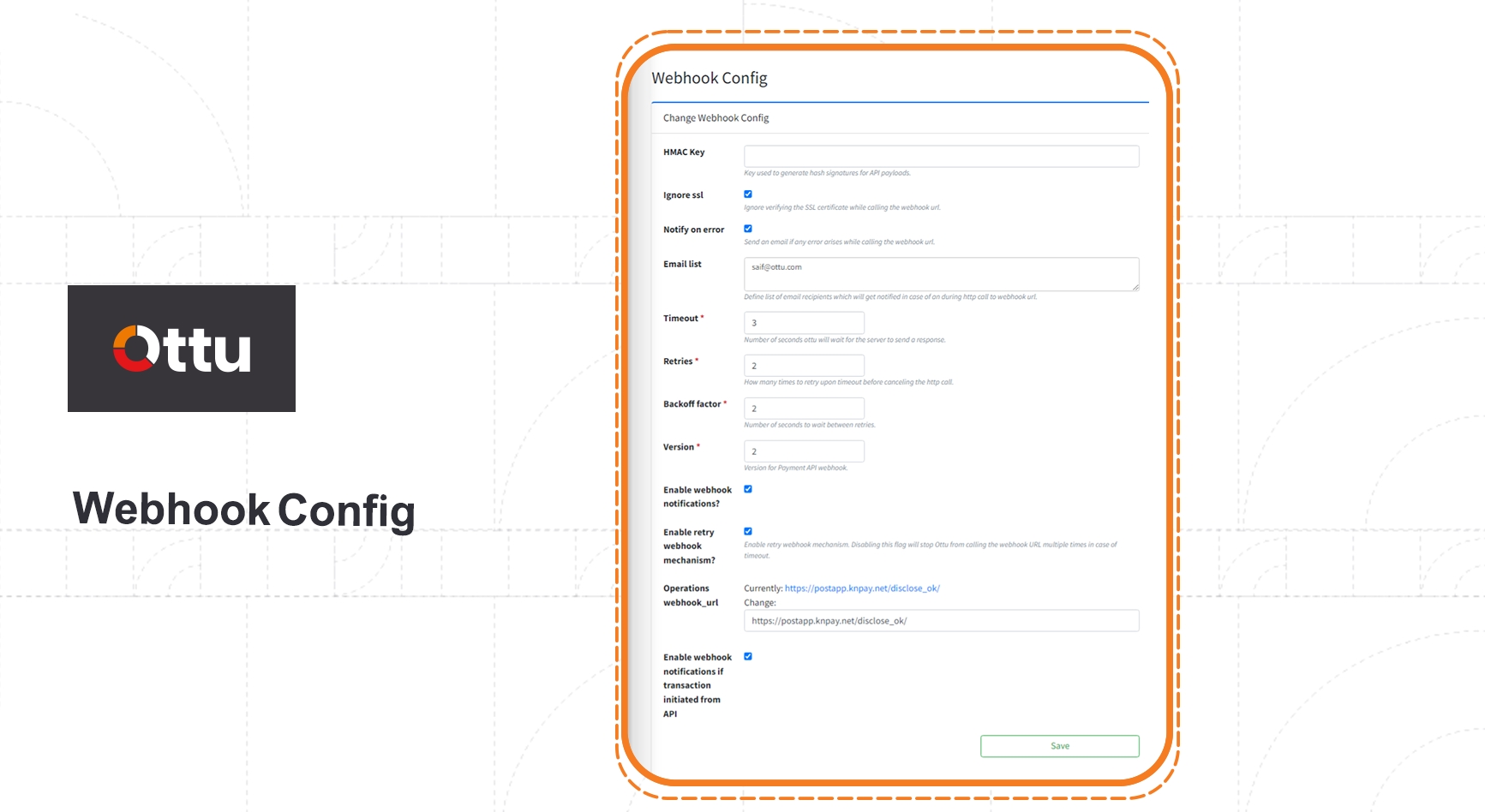Global Webhooks Configuration
General webhook configuration.
After accessing the Webhook Configuration section, the first tab you’ll encounter is General. In this section, merchants can configure their webhook settings according to their preferences by completing the fields below.

Parameters Description:
Consider a scenario in which the merchant’s server experiences a temporary downtime lasting 30 seconds. With a timeout duration of 20 seconds, a retry limit set at 3 attempts, and a backoff factor of 5 seconds, the following sequence of events will unfold:
Key Details to Remember:
The merchant’s server will take a total of 30 seconds to become responsive.
The retry mechanism allows for 3 attempts in total.

First Attempt:
Ottu's server initiates a request to the merchant's server.
Ottu's server waits for up to 20 seconds for a response (configured timeout = 20 seconds). Since the merchant’s server is still down, this attempt will fail due to timeout.
Ottu's server pauses for 5 seconds before the next attempt (backoff factor = 5 seconds).
Time Elapsed After First Attempt: 25 seconds (20 seconds waiting + 5 seconds backoff).
Second Attempt:
Ottu's server makes a second request to the merchant’s server.
As the 5-second backoff has completed, and the server downtime (30 seconds) has passed, the merchant's server is now responsive.
This second request succeeds, completing the process successfully.
This scenario illustrates how the retry logic with defined timeouts and a backoff factor ensures resilience during temporary server unavailability, helping to mitigate potential disruptions in the payment process.
Enable retry webhook mechanism? If checked, the retry webhook mechanism becomes operational, permitting Ottu to make multiple attempts to reach the webhook URL if a timeout occurs. If this feature is disabled, no further retries will occur, which could lead to some webhook calls being missed.
The redirect behavior is determined by the webhook URL response to payment events and payment operations.

If the webhook URL returns a status code of 200, the customer will be redirected to the redirect_url.
If the webhook URL returns a status code of 201, the customer will be redirected to the Ottu payment summary page.
If the webhook URL returns any other status code, the customer will be redirected to the Ottu payment summary page. In this case, Ottu can send an email notification if the Enable webhook notifications option is checked.
- Enable retry webhook mechanism:
If checked, Ottu will retry the request if the first attempt fails. See the Example above for further clarity.
- Operations webhook_url:
The URL where transaction data will be disclosed once an operation transaction flow is triggered. See Operation Webhook Notification.
- Enable webhook notifications if transaction initiated from API:
If checked, Payment Webhooks will be activated even if the transaction is created via the API.
Last updated